India's tribal slaves to stone
Published by MAC on 2016-04-23Source: Nostromo Research
A British scandal
Hundreds of tribal people sledge-hammer huge boulders while others, bare-handed, gather the pieces in kitchen bowls, hoist these onto their heads and empty them into waiting lorries.
Toiling under a tropical sun, these labourers - both women and men - are totally defenceless against splintered and flying stones and pervasive dust.
They have no access to stand pipes or other clean water. Few are protected by helmets or boots - some going barefooted - while re-inforced body jackets, gloves, eye goggles and face masks are nowhere in sight.
Such scenes are typical of many extractive operations in India, where health and safety regulations are ignored by thousands of small domestic construction and mining outfits.
But the company guilty of these violations has a workforce of 82,000 - and it's BRITISH!
To view a 4-minute video from which the following photos are taken, go to: https://www.youtube.com/watch?v=NcA4whA2bjM&feature=em-share_video_user
India's tribal slaves to stone
A British scandal
Nostromo Research
23 April 2016
The photos accompanying this report are from a video shot in February 2016 at the hill-top Bodai-Daldali mine in the central Indian state of Chhattisgarh, during a field trip by a joint British-Indian investigation team.
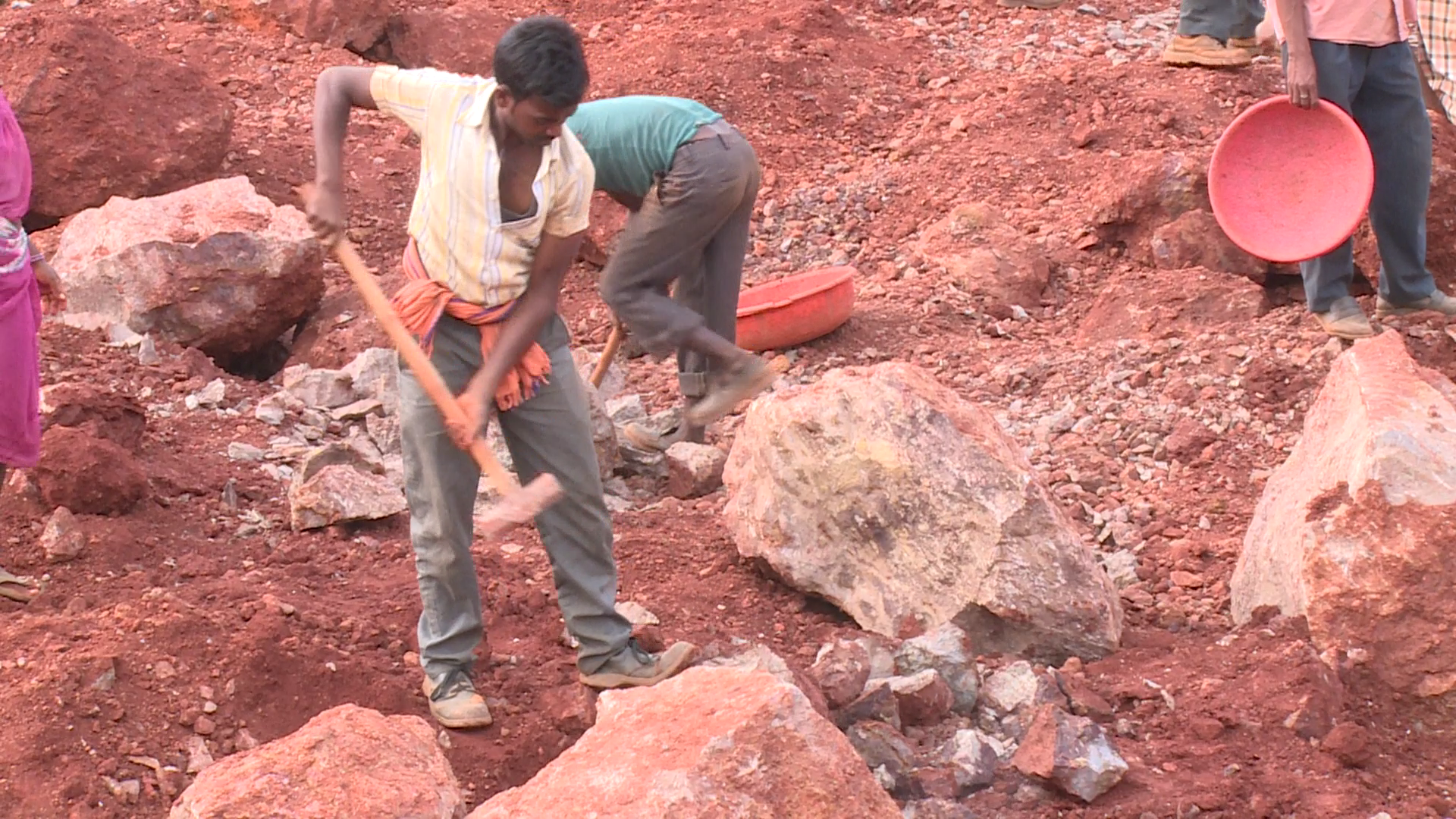 |
They depict women and men – many not yet full-grown – toiling in an environment that's manifestly unhealthy, hazardous, even life-threatening. Yet these labourers are afforded little or no protection from splintered and flying stones, or constant and pervasive dust which could damage their respiratory systems.
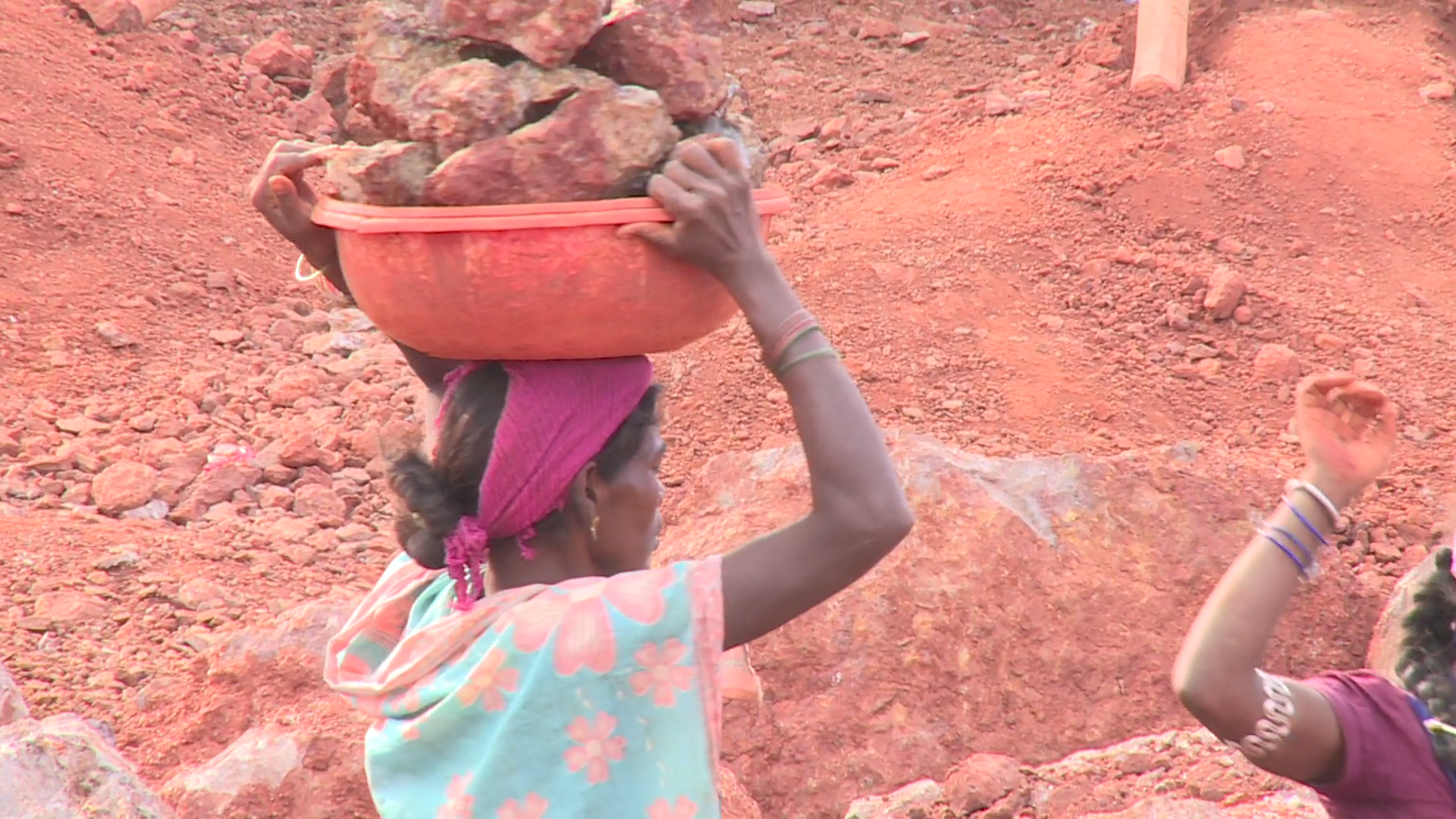 |
Almost none of them wear helmets or boots; some go barefoot. They pick up several kilos of stones with their bare hands, place them in plastic kitchen bowls, then hoist these up a precarious bamboo ladder into a waiting lorry. Protective jackets, eye goggles or face masks are nowhere to be seen.
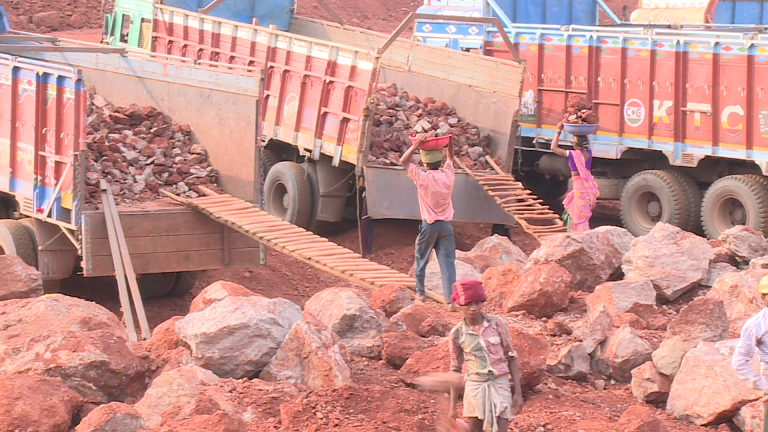 |
To a Western observer these scenes are quite shocking - and many Indians would agree. The only excuse for overlooking such patently dangerous, unhealthy, even life-threatening practices, is that the villagers themselves are willingly engaged in taking such risks.
Might they be striving to“lift” themselves out of endemic poverty - perhaps by repairing local roads, constructing new farm buildings, or reinforing their own homes in anticipation of the monsoons?
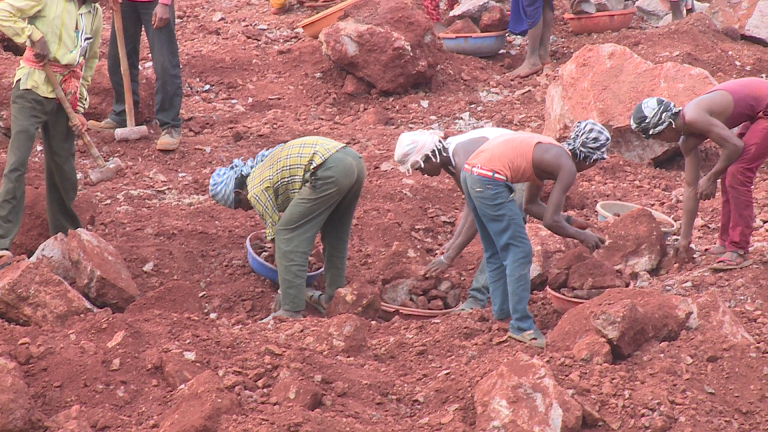 |
The Vedanta effect
On the contrary.
In fact, these are day labourers - the majority from Baigha indigenous communities - enlisted by one or other of three Indian haulage firms on behalf of the Bharat Aluminium Company (BALCO), which is a subsidiary of one of the world's leading mining multinationals, London-listed Vedanta Resources plc (1).
The right to occupy their own land and determine use and disposal of its resources is - at least theoretically - guarenteed under Schedule 5 of the Indian Constitution.
In addition, various United Nations' bodies, the World Bank-IFC and the International Labour Organisation, along with more than 80 financial institutions (2), have established performance principles or standards inter alia aimed at promoting sustainable livelihoods and safe forms of work.
These are clearly being grossly violated in this instance.
Despite quite a few Indians continuing to regard Vedanta as a home-grown enterprise, from late 2003 it's been firmly based in Britain, and its overall governance supposedly regulated by the UK's Financial Conduct Authority.
Although the company owns mines as far afield as Ireland and Australia, the majority of its assets are held in India. It's owned more than 60% by dollar billionaire chairman Anil Agarwal, who has close political ties to the ruling BJP and prime minister Narendra Modi.
Vendanta has many crores of rupees invested in India's iron ore, coal, lead, zinc, and other metals. In March 2016, it also won the e-auction for a gold mining lease in one of Chhattisgarh's dense northern forests (3) .
But aluminium is the Big Apple of Agarwal's eye.
He claims that India could – indeed must - become one of world's biggest suppliers of the so-called “green” metal. Vedanta is already India's largest single producer, and Agarwal predicts that domestic aluminium consumption would rise from a current two million tonnes a year to no fewer than twenty million tonnes (4).
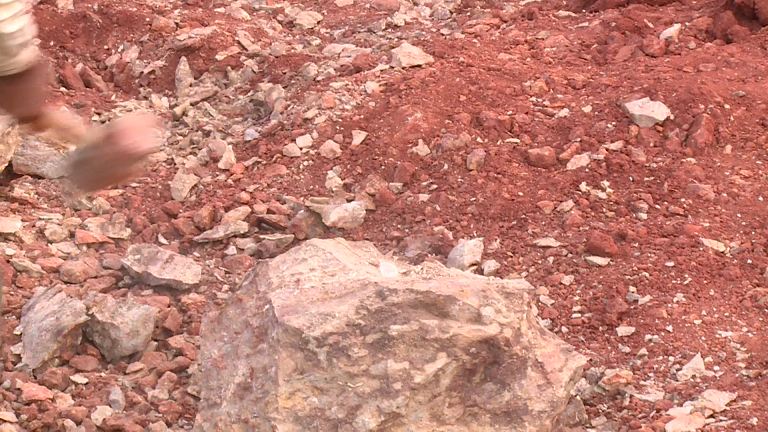 |
Rocks and very hard places
The essential feedstock for aluminium is bauxite ore (pictured above) containing varying proportions of aluminium, iron oxides, titanium oxides and silica.
Digging up and transporting bauxite creates a number of significant occupational health risks, which become acute in the total absence of safeguards, as shown here .
Predominantly found on top of tropical hills at fairly low depths, the ore is covered by trees, earth, other rocks, vegetation and scrub. Customarily, the bulk of this is scooped-out by mechanical diggers; the topsoil and its essential biota are then separated out and preserved for ongoing reclamation and regeneration.
At least, that's the mining industry's benchmark of good practice - one manifestly not being followed at Bodai Daldai, where the bauxite is gathered up by hundreds of the Baigha, working in gangs along a strip of pits now stretching towards the Kanha National Forest, across the border in Madhya Pradesh. The forest hosts critical tiger “corridors”, and was immortalised by Rudyard Kipling's Jungle Book.
It takes roughly three hours to fill a 10-tonne truck which then negotiates a steep, pot-holed kutcha track, winding several kilometres down to the plains below, where they offload their clumsy cargos onto trains at Kawardha township.
Several hours later, the ore ends up at an alumina refinery.
The labourers are collectively paid around 1,700 rupees (just under £18 at today's exchange rate) to dig and load ten tonnes of ore. They are not entitled to pensions or any other social benefits, nor do they have access to skilled emergency treatment in the event of a serious accident. There is no adequately staffed first aid post, while the Baigha must attend to the “needs of nature” in just a few flimsy latrines, or on open ground.
Virtually none of the conditions imposed by the government on the company - including those relating to dust control (such as covering of laden trucks); provision of safe drinking water and medical care facilities for workers; the reclamation and replanting of mined-out area - are being observed (5).
And importantly, nor have they been observed at Mainpat, Vedanta's older bauxite operations in northern Chhattisgarh.
Although Mainpat's mining lease expired in July 2012, last October it was renewed by the Ministry of Environment and Forest (MoEF). Now, Vedanta has permission not only to re-start mining, but the validity of its Environmental Clearance (EC) has been extended until July 2024 (sic) (6)
Judging by information given by a company representative at Mainpat in February to Nostromo Research, BALCO hopes to re-open the mine this month (April 2016) and start extracting and transporting bauxite by September.
It will be a daunting task to preparing the site for renewed exploitation, while also complying with some 23 strong operating conditions laid down in 2008 by the MoEF (7).
Having already flagrantly ignored or violated the majority of these conditions, there will be an almost-irresistible temptation for Vedanta to simply resume mining from where it left off four years ago - thereby compounding the widespread damage it's already done.
“Zero Harm”?
Just three months before these photos were taken, Vedanta released a self-congratulatory one-and-a-half minue Youtube video, boasting of high safety standards at the Bodai-Daldali mine. You don't need a degree in rocket science to discern the massive discrepancies between this corporate version of the Bodai-Daldai narrative and the true situation (8).
Vedanta's CEO is an Alaskan called Tom Albanese, appointed in 2014, after he left (or rather was ejected from) Rio Tinto accused of chalking up a multi-billion dollar debt for the world's second richest mining company. It wasn't long before he found a new master in the shape of Anil Agarwal.
The company sorely needed an experienced non-Indian, with something of an international reputation in the mining industry, to neutralise a decade-long criticism of its highly contentious practices and policies.
A significant number of investors, including the Church of England, have junked their holdings in the company. The Norwegian government pension fund - the world's largest of its kind – characterised Vedanta as “grossly unethical” in 2007, and hasn't changed its opinion in the years since.
Albanese's commitment to Vedanta came with a firm undertaking that he would ensure the company urgently improves its appalling safety record.
Chanting a mantra of “Zero Harm” - as he did at the company's 2015 annual shareholders meeting (AGM) in London - Mr Albanese admitted he was still far from achieving this goal: eight workers had died on his watch during the previous financial year.
In addition Vedanta recorded 5,406 man-days (sic) lost because of accidents at all its operations during the previous financial year. That's no mean figure, and it's virtually certain that many more such injuries - including those at Bodai-Daldali – won't have been recorded by Vedanta's sub-contractors, let alone the occurrence of respiratory disease and pulmonary disorders.
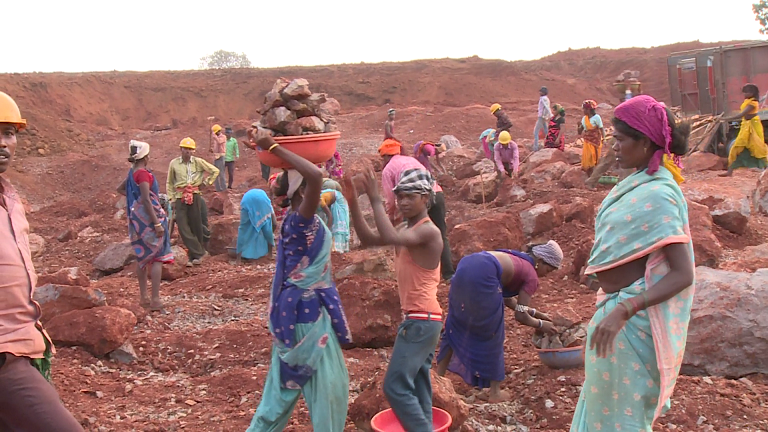 |
Ruthless double jeopardy
The deplorable working conditions for the Baigha people at Bodai-Daldali should be viewed in the context of several important realities.
* In every regard, these conditions markedly infringe several regulations laid down by the Ministry of the Environment and Forests (MOEF).
* Responsibility for these violations lies squarely with Vedanta as the legal operator of the mine. It must not, and cannot, be off-loaded onto sub-contractors – after all, it pays their bills.
* Most important, the Baigha labourers are drawn from communities which legally own the very territory – if not the resources beneath it - from which they were forcibly removed in 2005 onwards in order for mining to take place .
They have seen this land stripped clean of their homes, trees, pastures and virtually all its vegetation. Although “resettled” in six villages on the plains, their legal right to exercise free prior and informed consent (FPIC) to this insidious invasion was clearly denied from the outset
Vedanta's devious “master plan”
The next stop for the Bodai-Daldali bauxite, after leaving the railway station at Kawardah is not Chhattisgarh - although the Korba refinery is specifically stipulated as its destination in the permit for which the mine was granted clearance.
In fact, all the ore goes to Vedanta's Lanjigarh alumina refinery in neighbouring Odisha (Orissa).
The sixfold expansion of Bodai-Daldali mining from 2009 until today, was matched by the company's application to expand capacity at that refinery from a million to six million tonnes of alumina a year.
It's no secret that Vedanta originally intended the Lanjigarh refinery to receive most of its bauxite from the adjacent Nyamgiri hills.
That plan was overwhelmingly defeated in 2013 by a dozen local gram sabhas (village councils), consisting of members of the Dongria Khond community, which gave the proposal an emphatic thumbs-down, later endorsed by India's Supreme Court (SC).
The militant campaign to “Save Nyamgiri “ resonated well beyond India, attracting support from national and international NGOs, including Amnesty International, Survival International and Action Aid.
Alas, precious little such solidarity – indeed almost none – has so far been afforded to the Baigha, despite. Yet they purportedly enjoy the same rights as the Dongria – including preservation of their territory, keeping their ancestral homes and prospering from the crops and animals upon it.
In contrast their fate seems to have been well and truly sealed.
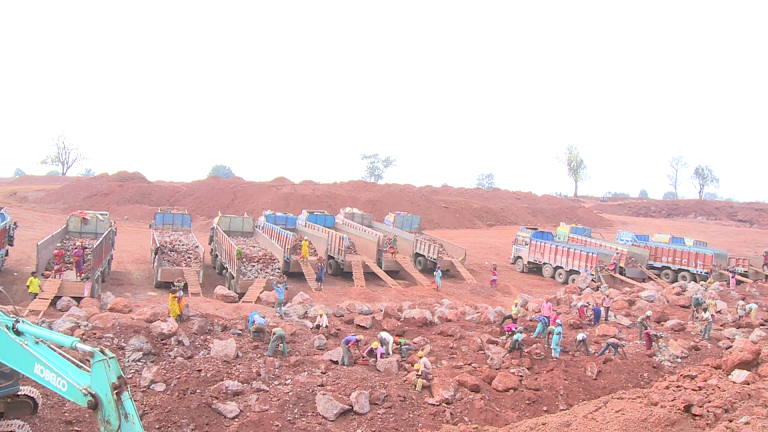 |
Nostromo Research, London, 23 April 2016
References
(1) For an account of the many maneovres employed by Anil Agarwal to transfer Sterlite Industries India to the London Stock Exchange, see: http://www.minesandcommunities.org/article.php?a=6488
(2) See: http://www.equator-principles.com/
(3) http://www.hindustantimes.com/business/vedanta-bags-india-s-first-gold-mine-lease-in-chhattisgarh/story-igFJypoy4v7J7Rb5h5PTxN.html
(4) http://www.thehindu.com/business/Industry/aluminium-use-to-rise-to-20-mt-anil-agarwal/article8399964.ece
(5)Bharat Aluminium Company Ltd, Half Yearly Compliance Status Report (no-12) for Bodai Daldali Bauxite mines (Kawardha Mines), to MoEF Regional Office, Western Region, 26 November 2011. This is the latest such report publicly available
(6) MoEF letter to M/s Bharat Aluminum Company Limited. F.Ni J-11015/235/2007.IA-II (M), New Delhi, 27 October 2015
(7) MoEF, letter to Chief Executive Officer, M/s BALCO, J-11015/235/2007-IA.II (M), New Delhi, 17 September 2008
(8) This video can be watched at: https://www.youtube.com/watch?v=Cx5GoJcTCG0